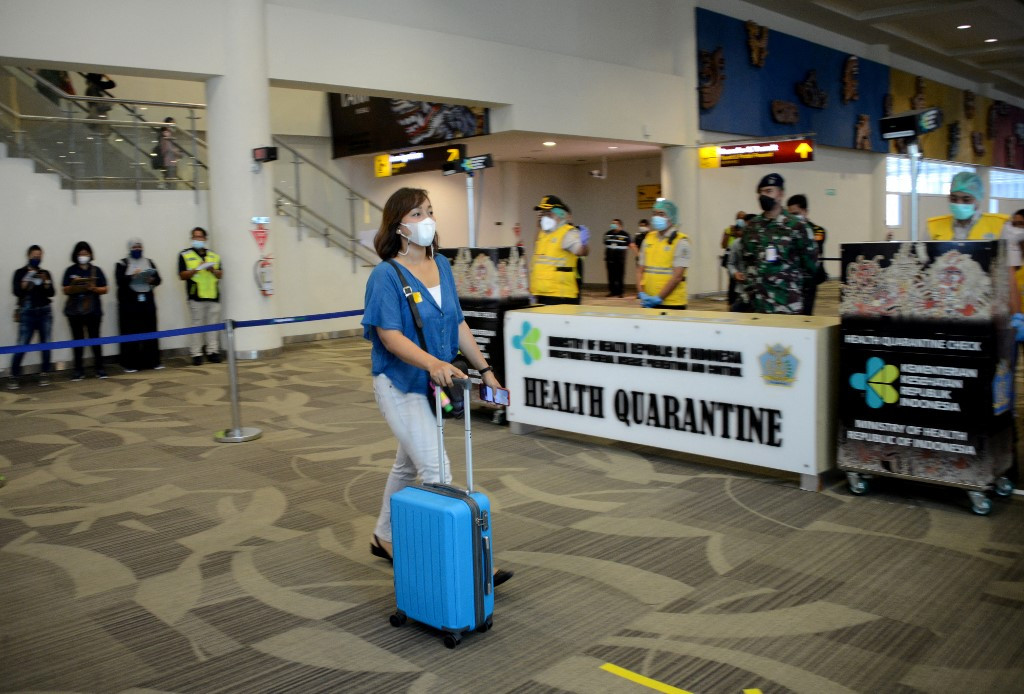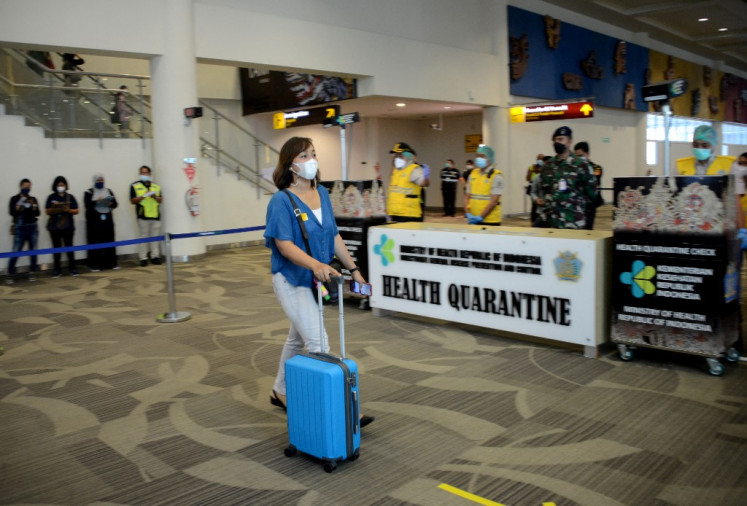Popular Reads
Top Results
Can't find what you're looking for?
View all search resultsPopular Reads
Top Results
Can't find what you're looking for?
View all search resultsHopeful Bali stirs from pandemic slumber
For the Balinese businesses that have borne the costs of the island’s desertion, Thursday's reopening represents the possibility of reemerging from financial torpor, and recent rosy virus figures have buoyed the government's hopes.
Change text size
Gift Premium Articles
to Anyone
A
s authorities work to iron out the kinks in health and travel policies for Bali’s muted reopening, the island’s inhabitants, both locals and relative newcomers, have begun to consider what once seemed like a remote possibility – that this time, international visitors could genuinely be returning.
For 23-year-old Ina, the news conjured a nostalgia for both the fortunes and frustrations of mass tourism.
“A few things I miss are those foreigners drunk on the street making such a noise, those crowded areas full of people and the vibes at parties, restaurants, cafés, etc. The kinds of daily activities I did before corona hit – those, I miss a lot,” she said.
Ina was working as a guest ambassador at the trendy Potato Head Beach Club in Seminyak when Bali officially closed to international tourism in April 2020. The company strove to keep its employees on the payroll, but as revenue dried up, salaries dwindled and the club eventually closed.
After a search, Ina managed to find a position as a business development and event manager, but many of her peers have continued to struggle.
“It was a roller coaster for all of us, especially my friends who were working [at Potato Head] at the time,” Ina told The Jakarta Post. “We had to try other ways of making a living. Some of us began selling food, alcohol or worked part-time at other companies.”
Paradise found
But a privileged few have been happy to fill, at least in part, the vacuum left in Bali’s hospitality and services market.
Young, white-collar Jakartans and other urbanites with the unprecedented flexibility of remote work have taken up residence in half-empty hotels and discounted villas to enjoy a Bali without traffic, without the need to make dinner reservations, without crowds at every scenic Instagram spot – in what Tourism and Creative Economy Minister Sandiaga Uno has dubbed WFB, “working from Bali”.
Now that may be coming to an end.
“I know I’m just a guest on this island,” said Irene, a Jakarta advertising professional who moved to Canggu when her firm transitioned to remote work at the beginning of the pandemic, “but I’m not looking forward to the flock of tourists coming in.”
“Before the pandemic, the villa that I’ve been staying in only offered daily rentals. Once international tourists start coming in, I may no longer get as great of a deal. Prices will go up for sure,” she said. “Most of the villas in tourist hot spots like Canggu aren’t meant for long-term stays.”
These professionals are joined by a menagerie of often more bohemian Westerners who remained in – or came to – Bali to weather the pandemic.
“So many people will get to work again, earn a well-needed income and feed their families,” said a DJ and yoga instructor from the United States who found herself in Bali just before borders closed and chose to remain. “I’m really hoping for this, but I’ll definitely miss the lack of traffic, the empty beaches and the discounted rates.”
A woman takes part in a simulation of Covid-19 health protocols at the international airport in Tuban on Indonesia's resort island of Bali on October 9, 2021, ahead of the island reopening to tourists on October 14. (AFP/Sonny Tumbelaka)Great expectations
For the Balinese businesses that have borne the costs of the island’s desertion, the reopening represents the possibility of reemerging from financial torpor, and recent rosy virus figures have buoyed hopes.
Before the pandemic, more than half of Bali’s income was derived from tourism, with some 6 million international and 10 million domestic tourists visiting every year. The suspension of foreign visitors caused the island’s gross regional product to contract for 15 consecutive months.
Now, authorities are marveling at Bali’s improving COVID-19 indicators and have promised similar results elsewhere in the country.
President Joko “Jokowi” Widodo credited Bali’s high vaccination rate for the decision to reopen. As of Friday, some 80 percent of the island’s 4.3 million residents had been fully vaccinated, while less than 1 percent had yet to receive a first jab, a provincial vaccination rate second only to Jakarta’s.
Bali’s new COVID-19 cases have also declined from around 1,400 per day in mid-July to less than 100 daily for the past three weeks.
Once the region with the highest number of coronavirus deaths, Bali recorded zero on Thursday – the first time since April of last year.
National COVID-19 task force spokeswoman Siti Nadia Tarmizi said the government had categorized Bali as a low-risk region for COVID-19.
"The bed occupancy rate on the island is currently at 11 percent, while its positivity rate, or the proportion of people tested who are positive, is currently at 0.9 percent, indicating that the outbreak is under control," she said.
Trials and tribulations
In addition to Bali, the government is now allowing direct international flights from select countries to the Riau Islands, where the popular tourist islands of Batam and Bintan are located.
“The reopening of all these places will act as a trial run that can be replicated in other places in due course,” Coordinating Economic Minister Airlangga Hartarto said earlier this week.
The move is also part of preparations to host major international events next year, including meetings associated with Indonesia’s Group of 20 presidency to be held in Bali and the MotoGP race to be held in Mandalika, West Nusa Tenggara.
But health experts were quick to encourage patience and prudence.
Dicky Budiman, an epidemiologist from Australia’s Griffith University, said it would be critical for the country to anticipate a potential resurgence of cases at the end of the year, as mobility usually picks up during the holiday season.
With hotel bookings predicted to start rising at the end of the month, Bali Governor I Wayan Koster has called on visitors and residents alike to continue observing health protocols as the island prepares to resume activities at a cautious pace.











